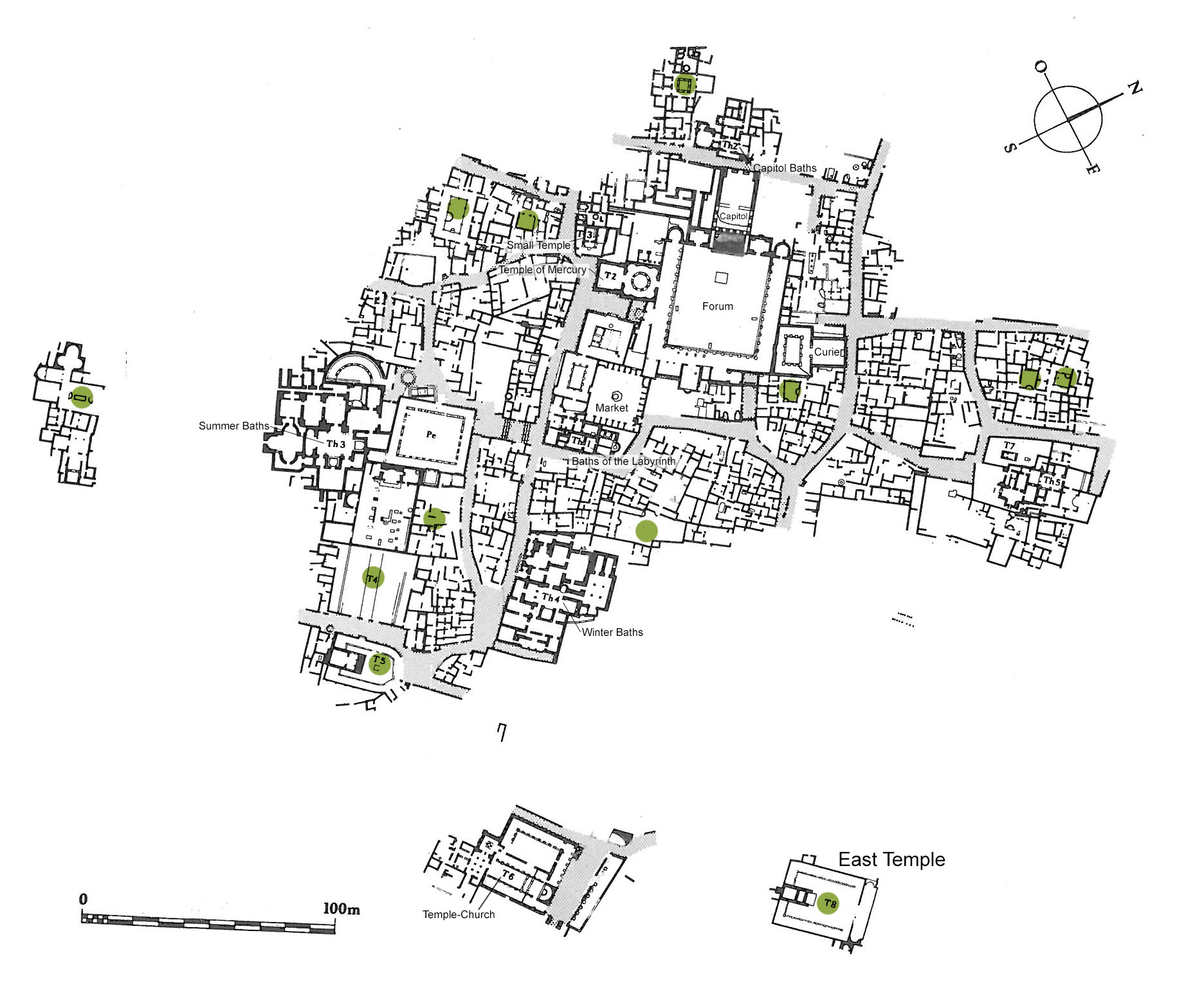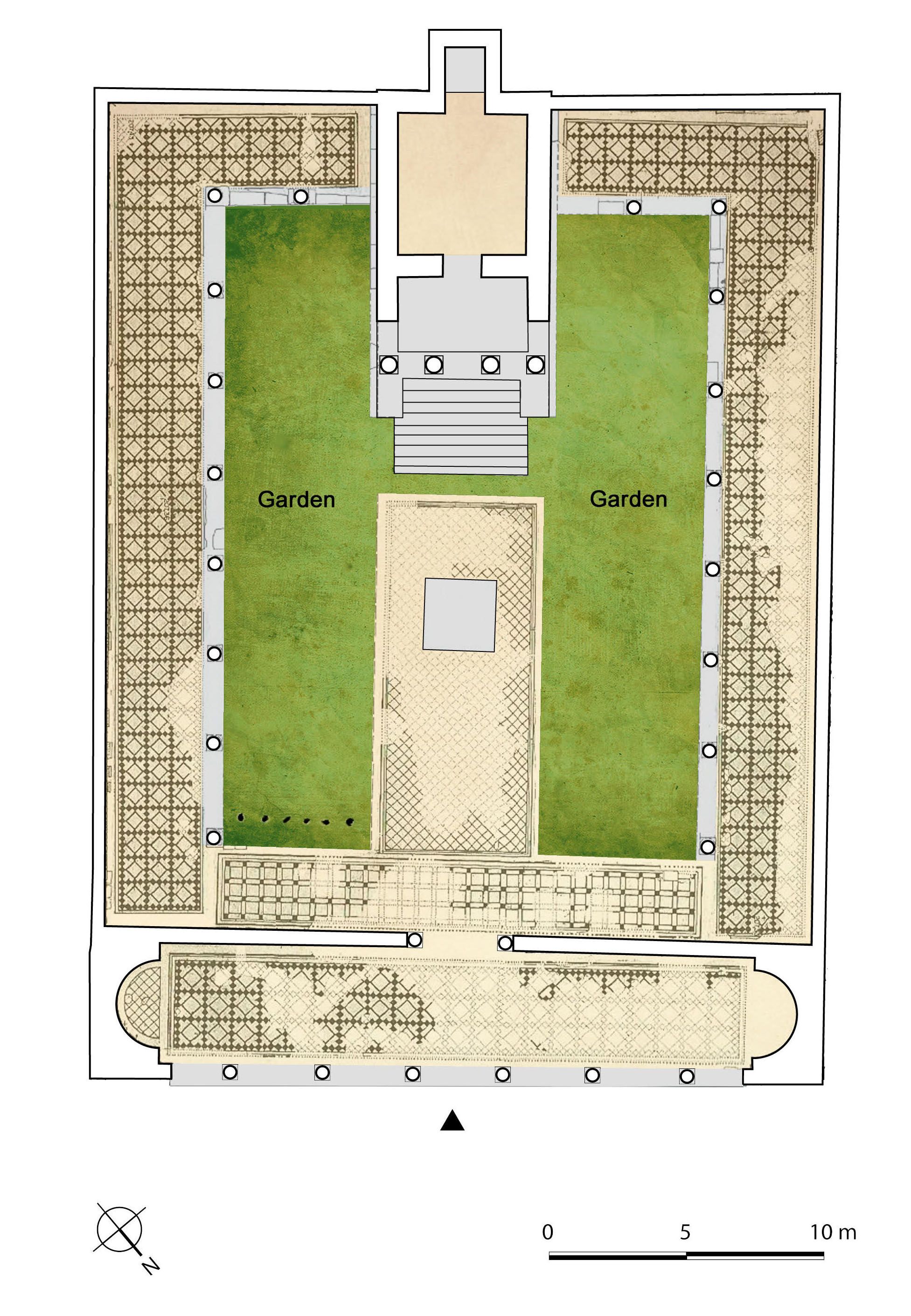East Temple (Temple de l'Est)
Province
Africa Proconsularis
Africa proconsularis (Pleiades)
Province Description
The history of Roman Africa begins in 146 BC with the destruction of Carthage and the establishment of the province of Africa in the most fertile part of the Carthaginian Empire. The new province covered about 5000 square miles (17,172 square kilometers) of the northern part of modern Tunisia. A praetor governed the area from his headquarters at Utica. The Romans inherited a thriving agriculture developed by the Carthaginians. The climate was hospitable. Wheat and barley were the most important cereals; wine and olive oil were also produced and there were various fruit trees.
Location
THUBURBO MAIUS (Henchir Kasbat), Tunisia
THUBURBO MAIUS (Henchir Kasbat), Tunisia (Pleiades)

Plan of Thuburbo Maius (CMT, Thuburbo Majus)
Location Description
The city occupies the slopes of a hill in a fertile grain producing area about 50 kilometers to the south of Tunis. Originally a settlement of mercenary soldiers after the fall of Carthage, it was raised to a municipium by Hadrian (117-138), and to a colony during the rein of Commodus (177-192). The chief public buildings and the most beautiful homes date from this period. After the crisis of the Empire during the third century, Thuburbo saw a rebirth in the fourth century; but as imperial authority declined the city became a mere village.
Garden
East Temple (Temple de l'Est)
Keywords
Garden Description
A strip of soil bordered most of the long sides of the temple and the mosaic paving in front of it (Plan view, Fig. 1). Preliminary excavations in 1990 in a strip 1m wide at the front of the garden, on the left, yielded a row of root cavities approximately 15cm in diameter and 50-70cm apart suggesting a formal planting. The size of the root cavities indicates that trees or large shrubs, perhaps laurels, were planted there. Temple gardens and groves are well known in the ancient world, primarily from literary evidence, but there is little archaeological evidence. For this reason the complete excavation of both strips of soil is extremely important. The soil in the preceding temples should also be excavated.
Maps
Plans

Fig. 1: Plan of the East Temple (CMT, V. II, fasc.4, plan 1-2. Malek, A.-A., 2018, fig. 14)
Dates
Unspecified
Bibliography
- Alexander, M.A., Ben Abed-Ben Khader, A. and David, S., Corpus des Mosaïques de Tunisie, Thuburbo Majus, Les mosaïques de la région Est, V. II, fasc.4,INA, Tunis, 1994, pp. 1-4, plan 1-2. (worldcat)
- Ben Abed-Ben Khader, A., Corpus des Mosaïques de Tunisie, Thuburbo Majus, Les mosaïques de la région Ouest, V. II, fasc.3, INA, Tunis, 1987.(worldcat)
- Jashemski, W. F., "Roman Gardens in Tunisia: Preliminary Excavations in the House of Bacchus and Ariadne and in the East Temple at Thuburbo Maius," AJA 99 (1995), pp. 559-576, p. 572, fig. 14. (worldcat)
- Malek, A.-A., "Le jardin dans les sanctuaires du Maghreb romain, premières approches", in Du culte aux sanctuaires : l’architecture religieuse dans l’Afrique romaine et byzantine, V. Brouquier Reddé, Fr. Baratte, E. Rocca (dir.), Paris, de Boccard, coll. Orient et Méditerranée, 2018, pp. 213-230. (worldcat)
Pleiades_ID
TGN ID
Contributor
Publication Date
21 Apr 2021